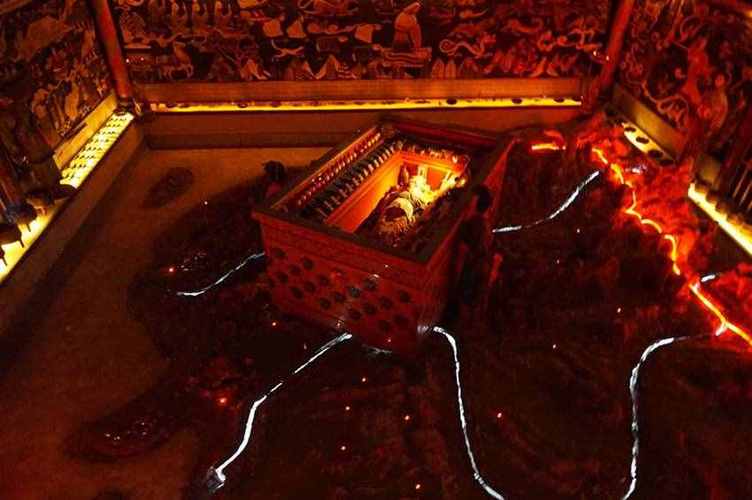
Why Hasn't the Tomb of Qin Shi Huang Been Opened?
The tomb of Qin Shi Huang, China's first emperor, is a site of immense historical significance and mystery. Though discovered in 1974, the tomb remains largely unexcavated, sparking curiosity and debate across the globe.
Technological and Preservation Concerns
A primary reason for the hesitation to excavate is the advanced state of the tomb's construction and the potential for irreparable damage. Historical records describe a complex system of booby traps designed to deter grave robbers. These range from rigged crossbows to rivers and seas of mercury, all intended to make looting the tomb a deadly endeavor.
While some of these accounts may be exaggerated, the presence of mercury has been scientifically confirmed. High levels detected in the soil above the tomb lend credibility to the ancient texts. Excavating the tomb without disturbing the delicate balance of the existing structure, and potentially releasing toxic mercury, presents a significant technological hurdle.
Moreover, preservation of the tomb's contents is a major concern. Exposure to air and light could irreparably damage the artifacts and murals sealed within for millennia. Archaeologists are wary of proceeding without guarantees that these historical treasures can be preserved using current technologies.
Ethical and Respectful Considerations
Beyond the practical concerns, there's also a strong ethical dimension to the decision. Some argue that disturbing the tomb, even for scientific study, disrespects the emperor and his eternal resting place. This perspective emphasizes the importance of honoring cultural beliefs and traditions surrounding death and burial.
Furthermore, there's a desire to learn from past archaeological mistakes. The excavation of other ancient tombs, sometimes carried out hastily and without adequate preservation techniques, resulted in significant damage and loss of valuable historical information.
The Future of the Tomb
Despite the challenges and ethical considerations, the allure of uncovering the secrets within Qin Shi Huang's tomb remains strong. Archaeologists continue to develop non-invasive techniques, such as ground-penetrating radar and remote sensing, to study the tomb's structure and contents without disturbing the site.
The hope is that these technologies will eventually provide sufficient information to make informed decisions about the future of the tomb, balancing the drive for knowledge with the imperative of preservation and respect.
FAQs
Why was Qin Shi Huang's tomb built so elaborately?
Qin Shi Huang, believing himself to be the first emperor of a dynasty meant to last ten thousand generations, spared no expense in constructing his tomb. The elaborate design, filled with treasures and wonders, was intended to reflect his power and provide for his afterlife.
What is the significance of mercury in the tomb?
In ancient China, mercury was believed to have mystical properties, including the ability to prolong life and prevent decay. The presence of mercury in Qin Shi Huang's tomb likely served a symbolic purpose, reflecting the emperor's desire for immortality.
What are the chances of the tomb ever being opened?
While it's difficult to say with certainty, the possibility of opening the tomb in the future cannot be ruled out. As technology advances and our understanding of the tomb's complexities increases, archaeologists may eventually be able to overcome the current challenges and unlock the secrets hidden within.
note: This return of all, without the author's permission, may not be reproduced